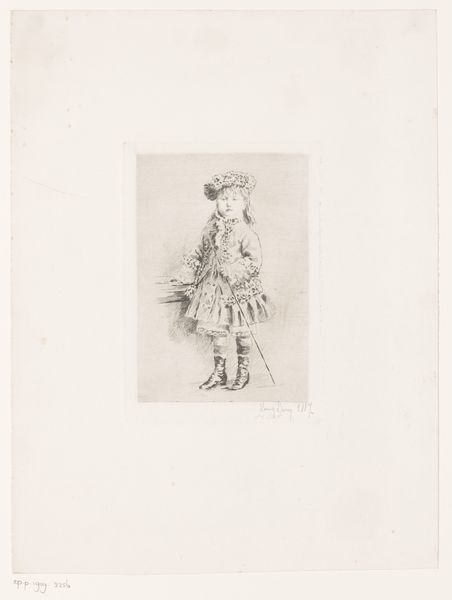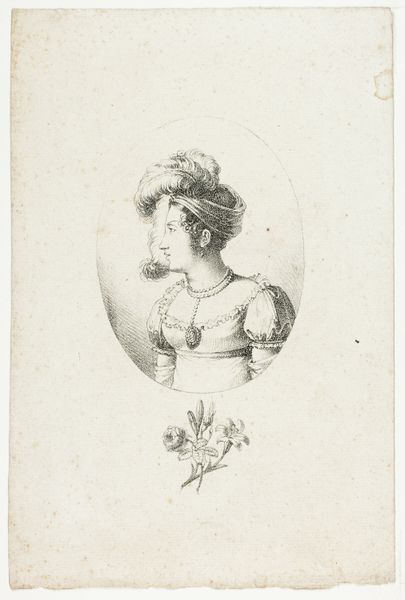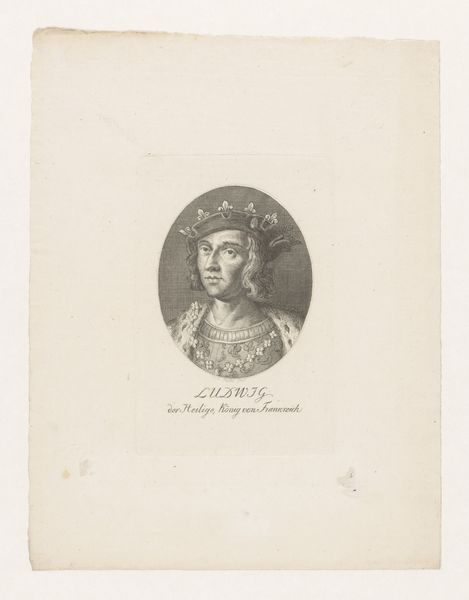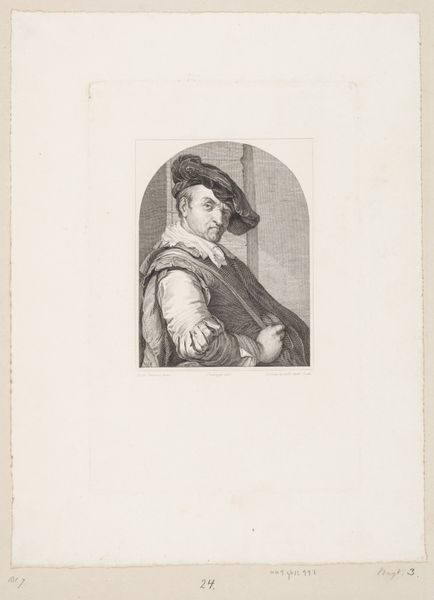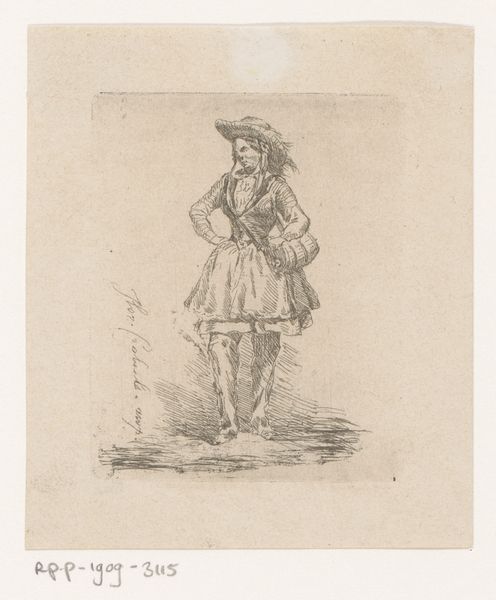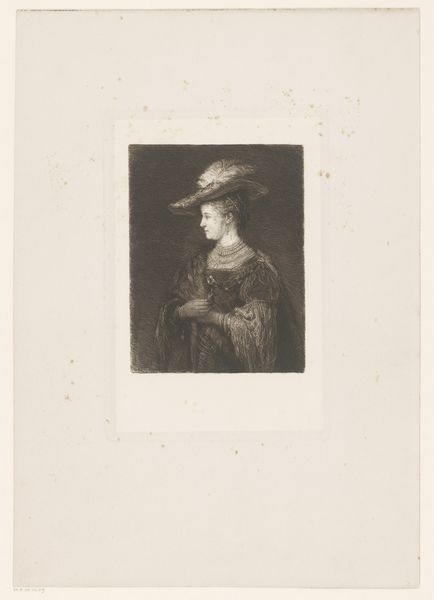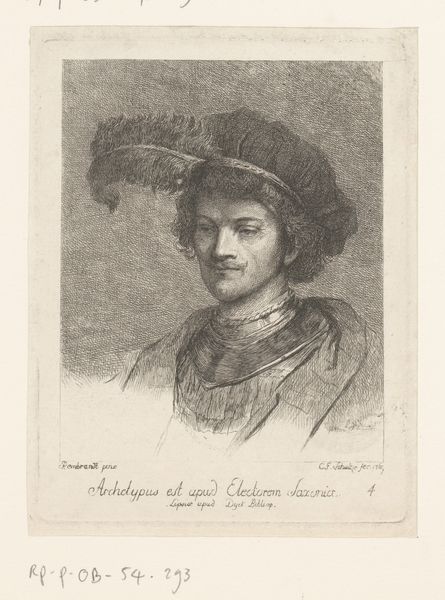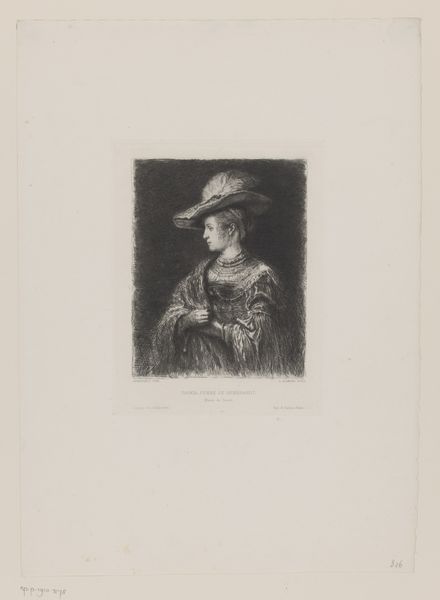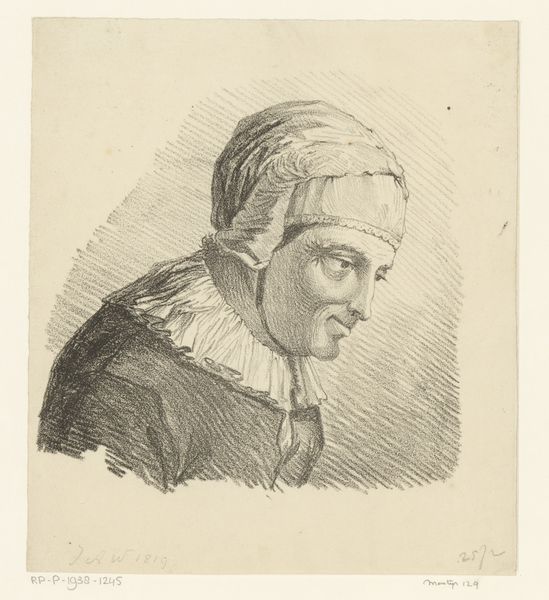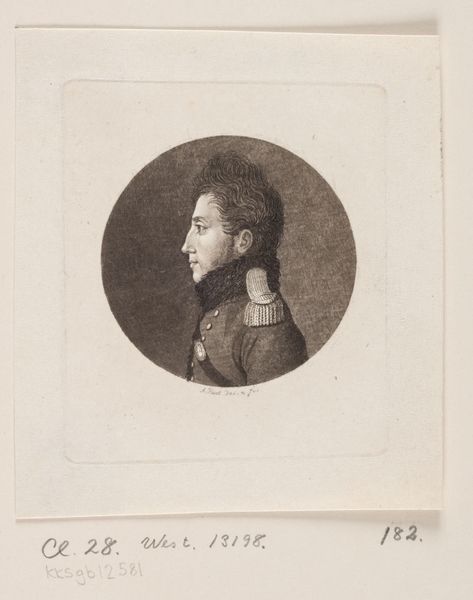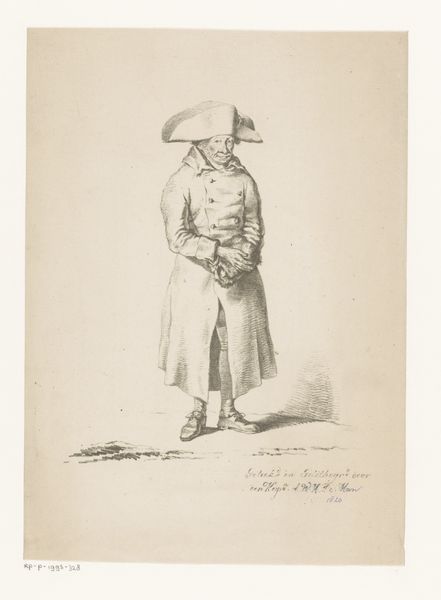
graphic-art, etching, engraving
#
portrait
#
graphic-art
#
etching
#
old engraving style
#
figuration
#
personal sketchbook
#
sketchbook drawing
#
history-painting
#
sketchbook art
#
engraving
Dimensions: height 150 mm, width 99 mm
Copyright: Rijks Museum: Open Domain
Editor: This is "Edelknaap," an etching and engraving by Jacques Doré, created between 1882 and 1888. The fine lines really give it a detailed look, almost like a study of texture and light. I’m curious about what details stand out to you? Curator: What strikes me immediately is the treatment of light and shadow through line work. Note the density and direction of hatching used to create volume. The formal device guides our eye, delineating the contours of the face and the folds of the clothing. Editor: The clothing *is* quite something! All the ruffles… what’s the point of including that level of sartorial detail? Curator: Observe how Doré juxtaposes areas of high contrast, for instance in the rendering of the cap versus the more diffused handling of the background. These juxtapositions create a visual rhythm. What do you observe? Editor: Now that you mention it, it seems like he used the contrast to make certain areas pop—the face especially. Is the backdrop meant to be just a backdrop, or part of the story? Curator: I believe that background is, in a semiotic sense, functioning as a signifier of depth rather than of any specific narrative space. Doré wants the viewer to appreciate how line alone can describe a material world. It is all about how texture and light interrelate, nothing more. Editor: So it’s about the method, more than the meaning. Interesting. I’ll definitely be looking at etchings differently now, paying closer attention to the use of line and shadow. Curator: Precisely. Seeing the visual architecture can sometimes be more revealing than understanding narrative.
Comments
No comments
Be the first to comment and join the conversation on the ultimate creative platform.
